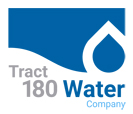Water efficiency reduces water wastage by measuring the amount of water required for a particular purpose and the amount of water used or delivered. Water efficiency differs from water conservation in that it focuses on reducing waste, not restricting use. Solutions for water efficiency focus on reducing the amount of potable water used and reducing non-potable water where appropriate (i.e., flushing toilet, watering landscape, etc.). It also emphasizes the influence consumers can have on water efficiency by making small behavioral changes to reduce water wastage and choosing more water-efficient products.
Outdoor Water Saving Tips
Every sprinkler nozzle is a shower, and that means they have the potential to waste water! Adjusting your sprinkler nozzle to minimize flow and eliminate overspray, and ensuring there is no overlap between sidewalk and patio watering, can save approximately 250 gallons per cycle! It’s also important to adjust your watering times monthly!
Different seasons also means different amounts of water for your plants! During the cooler fall and winter months, reducing most plants and turf to a maximum of 3 to 4 minutes of watering can save thousands of gallons of water each month.
Adjusting your lawn mower to ensure grass stays relatively tall will ensure that roots stay shaded and full of moisture.
Commercial facilities recycle water, saving more than 100 gallons per wash while reducing urban runoff pollution.
Mulch retains moisture, saving 20-30 gallons of water per day.
Preventing water evaporation can conserve nearly 15,000 gallons of water each year!
Keeping to these set timeframes can save 20-25 gallons of water per day due to wind and evaporation.
Your water-efficient drip irrigation system can save up to 300 gallons of water an hour!
Indoor Water Saving Tips
Leaks cost you money and water! Be on the lookout for worn toilet flappers, dripping faucets, broken sprinkler heads, and leaking valves.
Upgrade to the latest high-efficiency models and save up to 17,500 gallons each year!
Repairing leaky toilets can save you 30 to 500 gallons of water per day. Here’s a quick way to make sure your toilet stays leak-free:
- Remove the tank lid.
- Check the tank to see if the water level is above the manufacturer’s indicated water line. If it is below the waterline, make adjustments to correct the water level. If adjustments are made, reset the toilet by flushing it.
- Once any adjustments have been made, drop a dye tablet or several drops of blue food dye (avoid red food dye) into the tank. Do not flush. Wait 30-45 minutes.
- Check the water in the bowl for color. If the color appears in the bowl, there is a leak at the flapper. Replacing the toilet’s rubber flapper valve will likely remedy the situation.
Waiting to run both clothes and dishwashers until they are completely full can save up to 1,000 gallons of water each month.
There’s one easy way to tell if there’s a water leak in your home — an unusually high water bill! If the price of water seems high, be sure to check your home for leaks.
A simple solution to saving water in your home is installing water efficient shower heads. These easy-to-install fixtures can save up to 750 gallons of water per month.
Leaving the water running while performing everyday tasks can be a huge water waster! Turning off the water when brushing teeth, washing hands, shaving, and more can save lots of water each day!
Shortening a ten minute shower to five minutes can save 2.5 gallons of water per minute!
